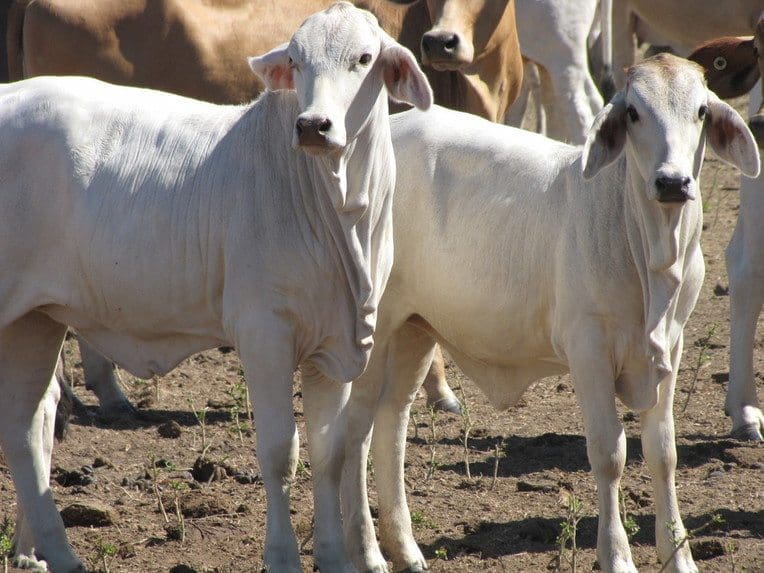
Young cattle on Kalala
THE theory that well-stocked cattle properties will be relatively easier to sell in the current property/cattle market cycle is being put to the test with the offering of large-scale Northern Territory cattle property Kalala Station this month.
Being offered by expressions of interest with approximately 40,000 Brahman and Brahman cross cattle on 3760sq km (940,000ac) of Barkly Tableland country, Kalala presents as a truly corporate-scale grazing operation.
It’s hard to recollect the last time a single property in northern Australian was offered with such a large cattle herd. Possible contenders include the aggregation of Walhallow/Mungabroom aggregation (two properties) sold last year with about 52,000 head combined. Anthony Lagoon and Eva Downs were sold by Heytesbury to AA Co in 2006, with perhaps 60,000 cattle; and Peter Sherwin’s Alroy Downs to Stirling Buntine is another candidate. Further back in time, the Helen Springs sale to Kidmans may have had similar or larger numbers.
Kalala is an extremely well-improved Perpetual Lease located just east of Daly Waters in the Barkly district about 280km south of Katherine. Country includes vast areas of fertile black and red soil types and some coolibah country.
The current herd includes about 20,000 breeding age females, with annual turnoff of 10,000 to 12,000 calves sold mainly as feeder weight cattle into the live export market. Year round market access is provided by frontage to both the Stuart and Carpentaria Highways.
First round muster for 2016 was completed a few weeks ago, and about 10,000 calves are likely to be branded this year, based on a typical 65pc calving.
Kalala’s advanced state of development is a tribute to original owners, territory legends Roy and Mick Beebe, who made extensive use of trap yards and laneways for easier cattle management. The Beebes sold 11 years ago to current owners the Murphy family from North Queensland, who have added further fencing and waters to further lift carrying capacity and better utilise available feed.
The Murphy family operate a number of other businesses from Kalala, including eight road-trains, hay-making plants, poly belting business, earthmoving plant, engineering workshop making cattle crates and dollies, and a dip and spelling yards facility.
Marketing agent Andy Gray from Territory Rural, said the vendors were now re-structuring their family business, but would continue to run their trucking operations and other businesses from a smaller property.
Mr Gray thinks the Northern Territory property market is somewhat ‘two-tiered’ at the present time.
The larger-scale properties in this region are the ones that have changed hands most readily recently
“The larger-scale properties in this region are the ones that have changed hands most readily recently,” he said.
“There’s been a number of examples, including Woolagorang, Wentworth, Willaroo, Cresswell, Rocklands and Tanbar – all very significant acquisitions.”
“We’ve had some recent success with smaller, well-located, well-presented properties as well, but it’s fair to say that the strongest appetite at present is for very large scale holdings with reasonable to larger herds – such as Kalala’s.”
Mr Gray said the inquiry to date for Kalala had been ‘very strong,’ from a mix of both domestic and overseas interests.
“We’re very comfortable with where the expressions of interest are up to at this stage, but obviously there’s a way to go yet,” he said.
“But there’s no doubt that the fact that it offers such a large herd, and is closer to fully stocked with good quality cattle, makes it just that much more attractive.”
Mr Gray said while widespread rain may have had a bearing in reinvigorating demand in more easterly parts of Australia, it had not really impacted the Barkly region where Kalala is located.
“Rain anywhere is always useful, but it has not directly affected this region,” he said.
“The last northern wet season was a light one, by normal standards, but nobody in this region yet is doing it tough – and certainly Kalala itself has a massive body of feed on it,” Mr Gray said.
Expressions of interest in Kalala close on 29 July.
